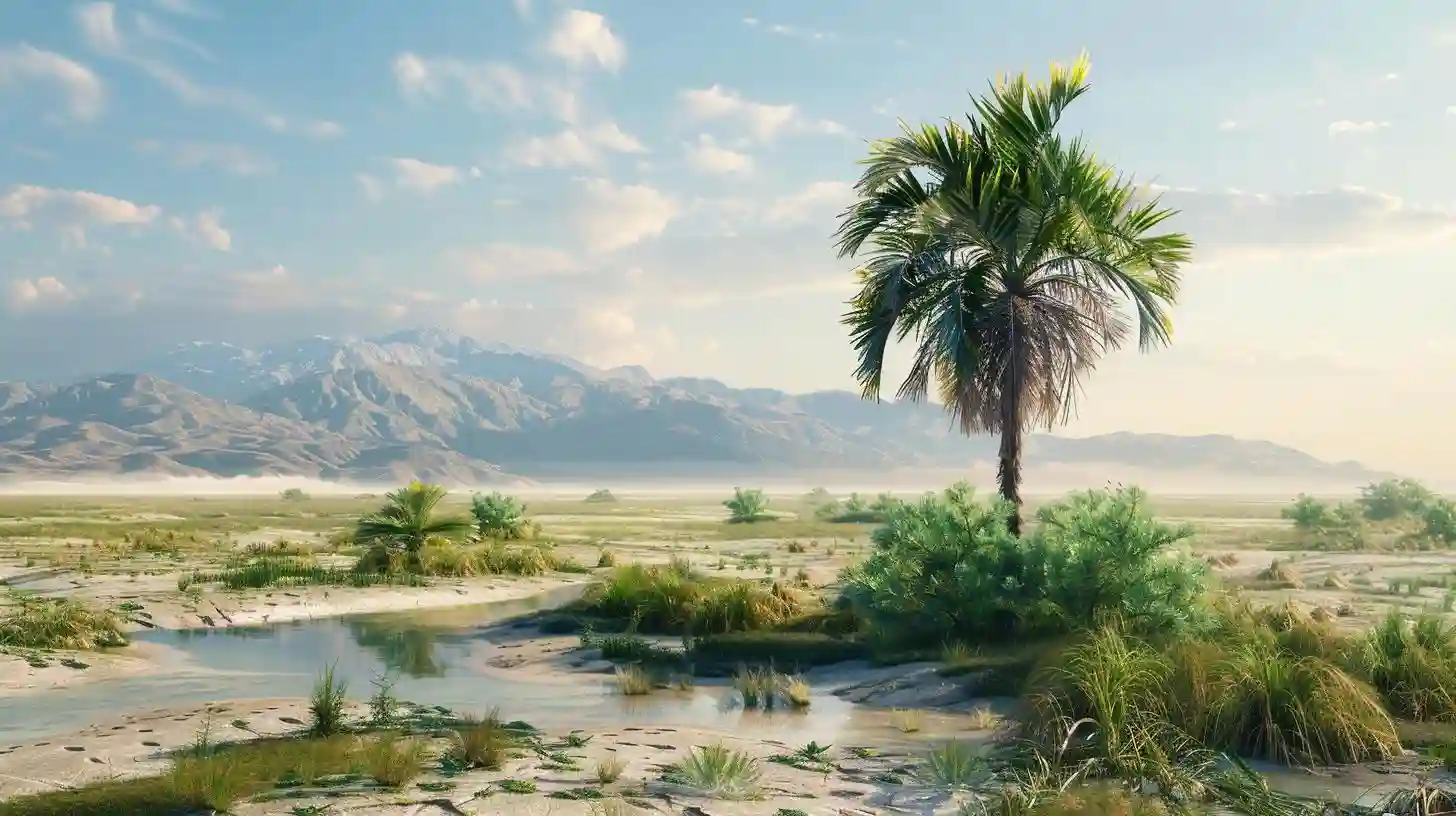
Oasis in the desert: a symbol of hope and resilience
Deserts are often viewed as harsh, unforgiving landscapes characterized by extreme temperatures, limited water sources, and sparse vegetation. However, among the vast expanses of sand and rock, there is a phenomenon that challenges this perception - an oasis. An oasis is a fertile place in the desert where there is water that provides shelter for life that can thrive in an inhospitable environment.
The appearance of an oasis in a desert can be explained by many factors, most notably the presence of an underground source of water, such as a spring or an aquifer. These water sources are often the result of geological processes that have occurred over millions of years, causing water to accumulate beneath the desert surface. When this water seeps to the surface, it creates a lush green oasis that contrasts sharply with the surrounding arid landscape.
One of the most famous examples of a desert oasis is the Siwa Oasis in Egypt. Situated in the middle of the vast Sahara Desert, this oasis is home to a thriving community supported by freshwater springs. Lush palm groves, fertile fields and crystal clear waters contrast sharply with the harsh desert, creating a paradise for both people and wildlife.
The existence of a desert oasis has long captured the imagination of people around the world, serving as a symbol of hope and resilience in the face of adversity. The sight of a green oasis in the middle of a barren desert evokes a sense of wonder and awe, reminding us of the power of nature to sustain life even in the most difficult conditions.
In literature and art, the oasis has often been used as a metaphor for renewal and rebirth. In T. S. Eliot's poem "The Waste Land," the poet describes an oasis in the desert as a place of refuge and restoration, a symbol of hope in a world suffering from despair and desolation. Likewise, artists such as Gustave Flaubert and John William Waterhouse depicted oases in their work as symbols of beauty and fertility in the midst of desolation.
The appearance of an oasis in the desert is a reminder of the delicate balance that exists in nature and the importance of preserving our natural resources for future generations. As climate change continues to impact our planet, the existence of desert oases is increasingly under threat as rising temperatures and dwindling water sources put these fragile ecosystems at risk.
The emergence of an oasis in the desert is a prime example of nature's ability to adapt and thrive even in the harshest conditions. The presence of freshwater springs and aquifers beneath the desert's surface allows for the creation of these green refuges, providing a lifeline for both people and wildlife in the harsh landscape. As symbols of hope and resilience, desert oases serve as powerful reminders of the beauty and fragility of our natural world, and the importance of protecting and preserving it for future generations.